Freezing tomatillos is a great way to preserve them so you have some on hand whenever you need them.
The process is easy, and frozen tomatillos maintain their texture and flavor very well, even without blanching.
They’re perfect to use in any recipe, like for making salsas, soups, and casseroles, all year long.
In this post, I’ll show you exactly how to freeze tomatillos fresh from your garden or the grocery store, with easy-to-follow steps.
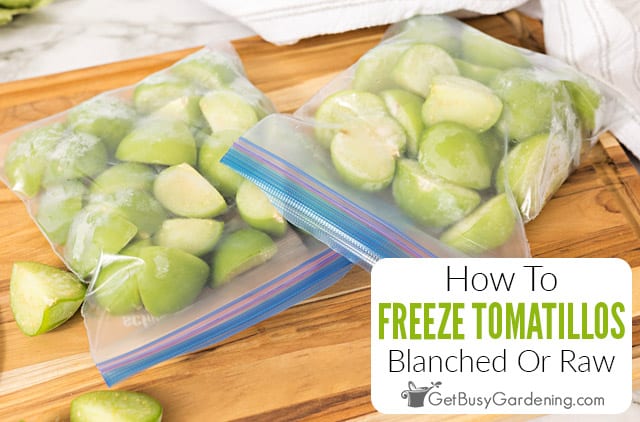
Can You Freeze Tomatillos?
Yes, you can freeze tomatillos for future use, and it’s simple. They hold their texture and flavor very well, whether you leave them whole, cut them up, or puree or roast them first.
It’s an easy way to preserve your garden’s bounty before it goes bad, or you could freeze ones from the farmer’s market or grocery store.
Related Post: How To Grow Kohlrabi At Home
Preparing Tomatillos For Freezing
The first thing you need to do to prepare your tomatillos for freezing is to peel off and discard the papery husks and stems.
Rinse them with water to remove any dirt or debris, gently scrubbing with a vegetable brush if necessary, drain them in a colander, and pat them dry.
You can leave them whole if you’re short on time, or cut them up any way you prefer to make them easier to use in your recipes later on.
Do You Have To Blanch Tomatillos Before Freezing?
No, you do not have to blanch tomatillos before freezing them. But if you want to remove the skins, then blanching them will make it easier.
How To Blanch Tomatillos To Freeze
To blanch tomatillos to freeze, bring a large pot of water to a rolling boil on the stove.
Use a slotted spoon to carefully submerge them (pieces or whole), and boil them for 3 minutes. Then place them into a bowl of ice water right away to stop the cooking process.
Alternatively, you can broil them in the oven for 15 minutes, or roast them at 400°F for 20-30 minutes. Allow them to cool completely before freezing.

Methods For Freezing Tomatillos
There are several ways to freeze tomatillos, and I’ll talk about each option below. The method you choose depends on the time you have now and how you plan to use them later.
Freezing Whole Or Chopped Tomatillo Pieces
You can slice, quarter, or half your tomatillos, or keep them whole for freezing – they are so versatile.
The fastest option is to leave them whole, which is ideal if you’re short on time (and what gardener isn’t in the fall?).
But I like to cut them into pieces so I can use only what I need, and I don’t have this added step later while I’m cooking.
Freezing Tomatillo Puree
Pureeing your tomatillos before freezing them is another option, and convenient for quickly making recipes like salsa verde and sauces.
You can fill up freezer bags with the exact portion of puree you’ll need later, or freeze it in ice cube trays first for less mess.
Freezing Roasted Tomatillos
To save yourself even more time in the future, you can choose to roast your tomatillos in the oven before you freeze them.
If you want to try this, either broil them for 15 minutes or bake them for 20-30 minutes at 400°F. Then let them to cool completely before freezing them.
Flash Freezing Tomatillos
Flash freezing your tomatillos is optional, but I highly recommend doing it, as it prevents them from sticking together in one large clump.
Otherwise, it will be difficult to separate them without thawing the whole clump first. If you’ve portioned out the exact amount you need, then you can skip this step.
Simply place them on a baking sheet lined with parchment paper so they aren’t touching each other, then freeze them for about an hour, or until they’re hard to the touch.
Related Post: How To Freeze Kohlrabi (With Or Without Blanching)
Tools & Supplies Needed
Below is a list of the tools and equipment you may need. But depending on the process you choose to use, you might not need everything.
- Quart freezer bags OR Gallon freezer bags
- Permanent marker
- Sharp knife (optional)
- Large slotted spoon (optional)
- Vegetable brush (optional)
- Large pot (optional)
- Baking sheet (optional)
- Parchment paper (optional)
- Colander (optional)
- Hands free baggie holder (optional)
How To Store Tomatillos In The Freezer
To store your tomatillos, place them into freezer bags and squeeze out as much air as you can. Then lay them flat, label and date them using a permanent marker, and stack them in your freezer.
If you plan to leave them whole, you can use larger gallon sized bags. Or, if you prefer, use any type of freezer-safe container that you have on hand.
How Long Do Frozen Tomatillos Last?
When stored properly, frozen tomatillos will last in your freezer for about 6 months. You could try using a food vacuum sealer to help them last longer.
FAQs
Here are some of the most common questions I get asked about freezing tomatillos. If you can’t find your answer here, add it in the comments section below.
How long can I keep tomatillos in the freezer?
You can keep tomatillos in the freezer for about 6 months, as long as you store them properly. But they could last longer, especially if you use a food vacuum sealer.
Can you roast tomatillos and then freeze them?
Yes, you can roast tomatillos and then freeze them, it works very well. Just be sure to allow them to cool completely before filling your baggie or container.
Can you freeze tomatillos to make salsa later?
Yes, you can freeze tomatillos to make salsa later, or any other recipe you’d like. You could cut them into slices, small pieces, or puree them ahead of time so it’s even quicker to whip up a batch of your favorite salsa.
What do I do with frozen tomatillos?
You can do almost anything with frozen tomatillos that you can with fresh. They’re great for making salsas or salsa verde, sauces, casseroles, soups, or any of your favorite recipes.
If you’d like to learn how to make the most of your space and get as much homegrown food as possible, then my Vertical Vegetables book is perfect! It will teach you all you need to know, has tons of gorgeous photos, and includes 23 DIY projects you can build for your own garden. Order your copy today!
Learn more about my Vertical Vegetables book here.
More About Food Preservation
Share your tips for freezing tomatillos in the comments section below.
Step By Step Instructions
How To Freeze Tomatillos
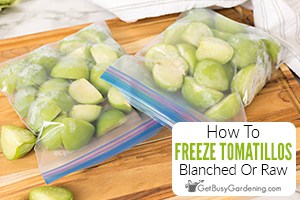
Freezing tomatillos is simple and quick. They’re great for making salsa verde, sauces, salsas, soups, and casseroles, or add them to any dish that calls for fresh.
Ingredients
- Fresh tomatillos
Instructions
- Prepare the tomatillos - Remove and discard the papery outer husks and the stems. Place the tomatillos in a colander and rinse them to remove any debris, gently scrubbing with a veggie brush if necessary.

- Cut them up (optional) - You could chop them into smaller pieces if you’d like, I prefer to cut mine in half or quarters. But you can skip this step if you’d rather leave them whole.

- Blanch them (optional) - If you choose to blanch them before freezing, place your tomatillos in boiling water for 3 minutes. Remove and immediately place them into ice water to cool and to stop the cooking process.
- Flash freeze - Line a baking sheet with parchment paper and place the tomatillos on it, spacing them out so they aren’t touching each other. Then put them into the freezer for an hour, or until they feel hard to the touch.

- Fill the baggies - Fill your freezer baggies (a hands-free holder makes this task easier), gently press out any extra air, and seal the bags. Use a permanent marker to label and date them before stacking them in your freezer.

Notes
- It’s a good idea to flash freeze your tomatillos first, so that they don't stick together in one large clump.
- To extend their shelf life and prevent freezer burn, try using a food vacuum sealer.
- If you’d like to cook your tomatillos first, broil them for 15 minutes, or roast them at 400°F for 20-30 minutes.

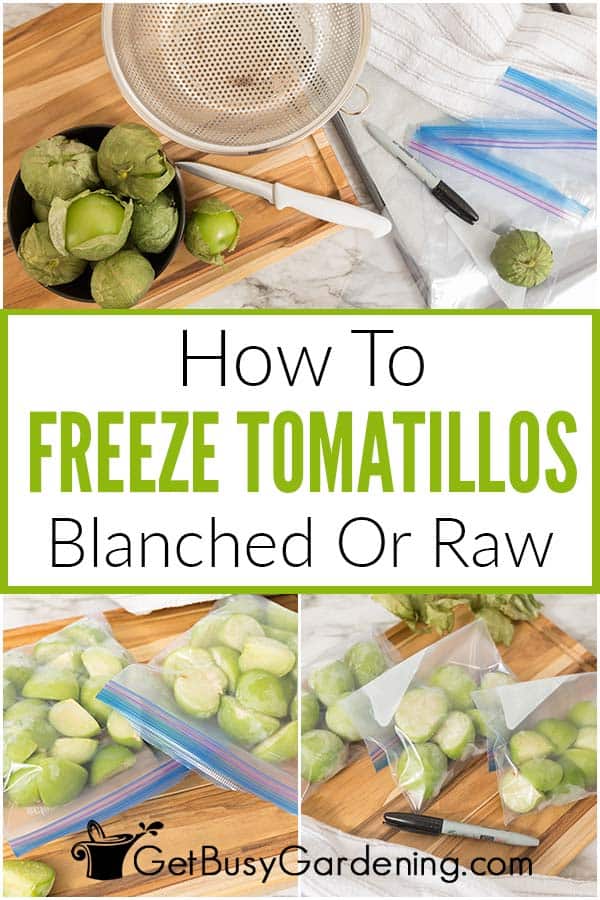
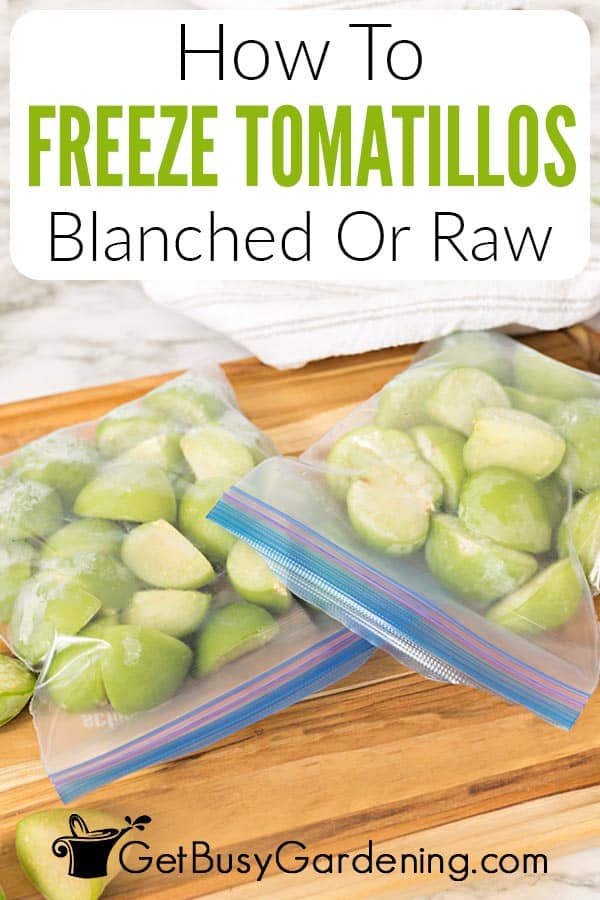


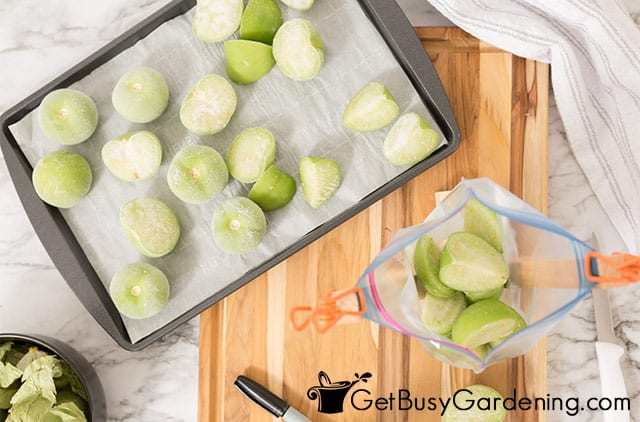
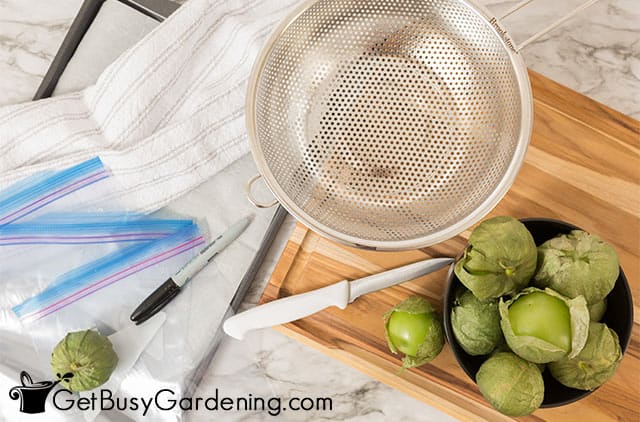
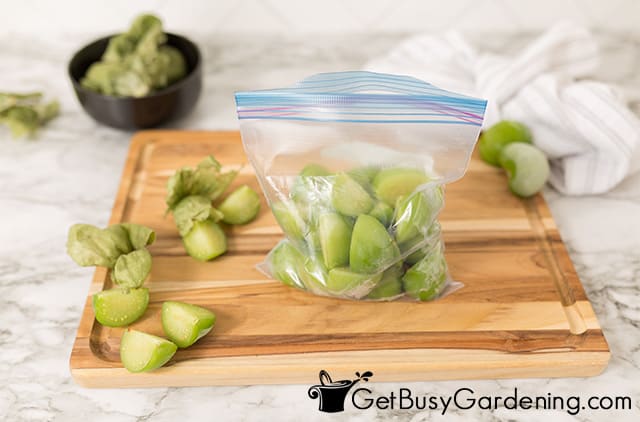

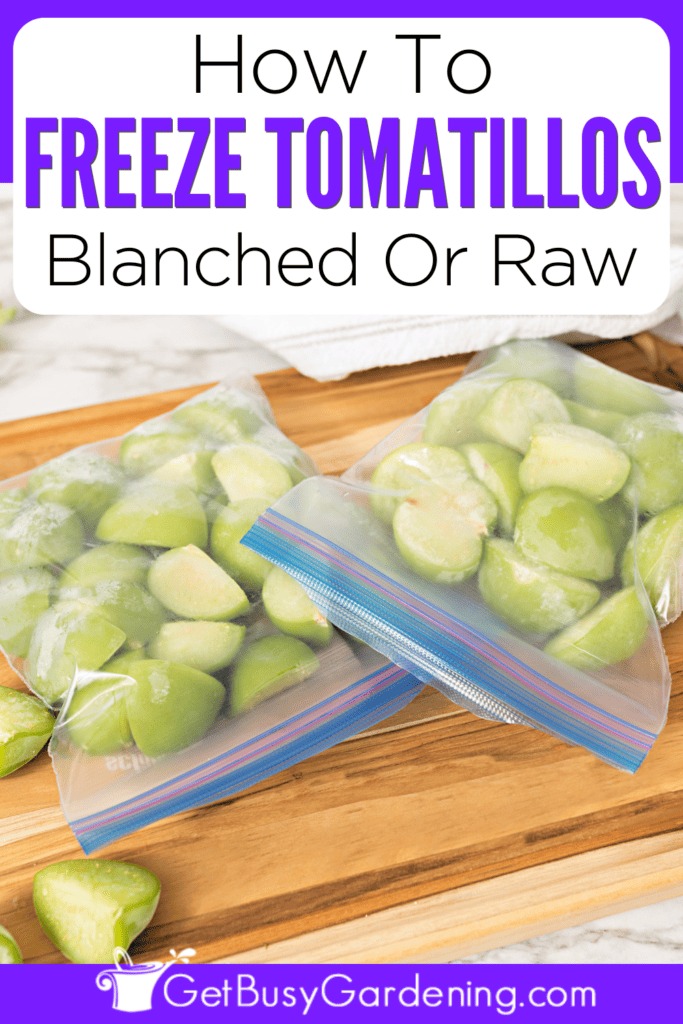
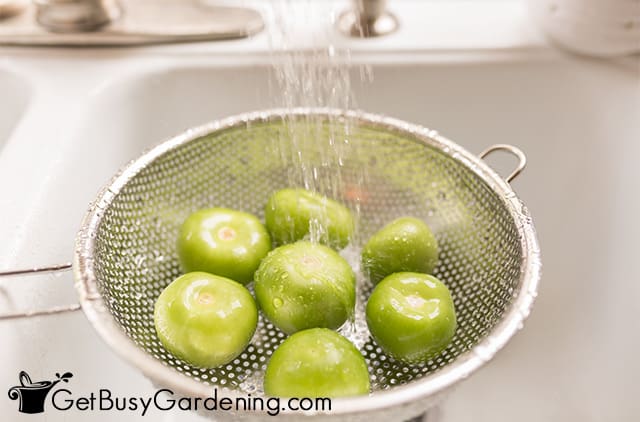
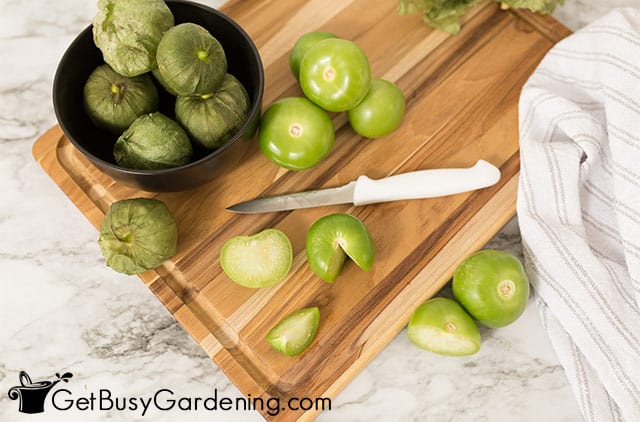

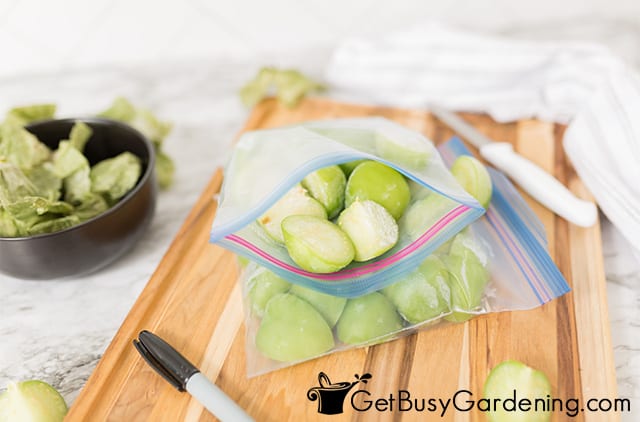

Pamela Flowers says
Can I roast my tomatillas and puree all recipe and then freeze this in a plastic container.
Amy Andrychowicz says
I’ve never tried freezing plain roasted tomatillo puree. But I have had great luck freezing my homemade roasted tomatillo salsa, so I would think it would work great for you.